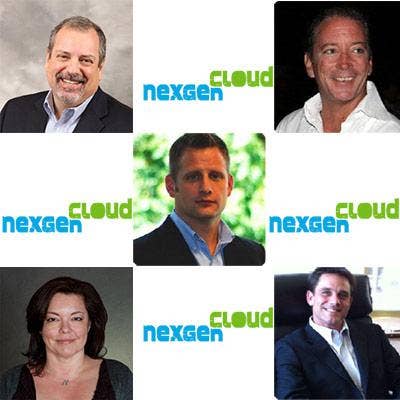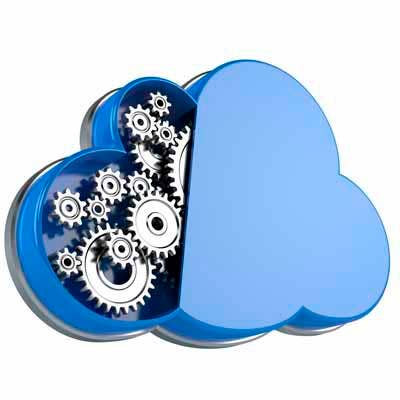NexGen Cloud Speakers: How Partners Can Win In The Cloud
All Roads Lead To The Cloud
What are the best ways partners and their customers can make money from the cloud? CRN reached out to executives with five cloud-focused solution providers for their views on monetizing cloud technologies and what the future holds for multi-cloud sourcing and integration.
The executives will be speaking at next month’s NexGen Cloud Conference in San Diego, sponsored by CRN’s parent, The Channel Company.
This slideshow is the first of two with these solution providers. The second slideshow, which will be published later this week, will cover which providers will win as competition in the space continues to heat up.

The Experts
The executives featured in this slideshow are:
-- Jo Peterson (pictured, lower left), vice president of converged cloud and data at cloud consultancy Clarify 360, and Michael Goodenough (lower right), vice president of cloud solutions at BCM One. At the conference, they will take part in a panel discussion: Telco Partners Take on IT Cloud;
-- Michael Knight (center), CTO of Encore Technology Group (His conference topic: Managing Identities in a Cloud Connected World);
-- Jeff Ponts (upper left), COO and executive vice president of Datatel Solutions. (Conference topic: Opportunities with unified communications as a service. He will also lead a panel discussion on The Future of the Converged Partner); and
-- Chris Pyle (upper right), president and CEO, Champion Solution Group. (Conference topic: How to make money from Office 365.)
Read their responses to three questions in the next five slides.

Where are you finding the greatest opportunities to add value for your customers as more services move to the cloud?
PETERSON: The biggest way we are creating opportunities is by acting as a benchmark for what is available in the market. … It is very important for MSPs to be aware of what the landscape out there is and what the possibilities are [from every cloud provider] so they can provide the best fit for the client. That service is invaluable to the client.
GOODENOUGH: We are seeing the concept of SaaS, which was once hard to understand, drastically changing. … Almost every customer we have provides some type of service, and for us to be able to take the revenue-generation side of their business and directly tie it to cloud, really shows them the value.
More answers to this question on the next slide...

Where are you finding the greatest opportunities to add value for your customers as more services move to the cloud?
KNIGHT: We are finding that it is really about onboarding clients to cloud resources that Microsoft or any as-a-service platform provides. It is important to create a (recurring) revenue stream by helping onboard clients and helping them maintain connectivity to those platforms.
PONTS: The goal for any VAR or MSP (is) to own as many pieces of the client's environment as possible. The desktop is core, so are voice services. I think the IT industry needs to start looking at moving into the voice and communications parts of the business.
PYLE: We are starting to help our clients with change management and adapting to the Microsoft cloud. Our current focus is on change adoption and how to use it to unleash the business adoption of Microsoft 365 and Azure.

Will multi-cloud sourcing continue gaining popularity? Why or why not?
PETERSON: Absolutely. In the future, the question will not be about if you have multiple clouds or not; it is going to be about how you orchestrate them. Being able to orchestrate them and make it easy for the client is going to be of absolute importance with multiple clouds.
GOODENOUGH: Multi-cloud orchestration is going to be wave of the future, and being able to look at and work with the quickly changing lifecycle of the clouds is important. …
Solution providers need to look at a standardization of brokering now. It is huge … having the ability to move, add, change and secure clients in a multi-cloud environment. Brokering is not just moving clients to cloud but being able to provide a true cloud orchestration.
More answers to this question on the next slide …

Will multi-cloud sourcing continue gaining popularity? Why or why not?
KNIGHT: Absolutely. It comes down to what service you want. Certain providers already understand that we have a platform that allows customers to sign into, control and manage all of their cloud services from a platform. They don’t know that they are using different services, but they are getting access to all of their services.
PYLE: No. … Software … will continue to be sourced from multiple clouds, when it comes to compute and storage. But … over time, people will end up liking a certain management interface and use only that one. At the end of the day, it’s a race to zero as far as pricing … but the deciding factor for clients will be: 'What interface do I like to work with?'

What are the biggest revenue opportunities for cloud MSPs in the next two years?
GOODENOUGH: If you look at where the market is, it has to be the multi-cloud assimilation. … At the end of the day, a lot of the characteristics are wrapped up in all of these components working cohesively. …
The biggest opportunities are cohesive services that can be provided from partners that can help to bridge the gap.
PONTS: The biggest revenue opportunities - assuming that they already have (remote monitoring and management) down - … are in digital marketing, meaning creating leads, not just fluff marketing, and Office 365 to voice integration (turning 365 into a phone system). Solution providers need to own as much of a client's environment as they can.